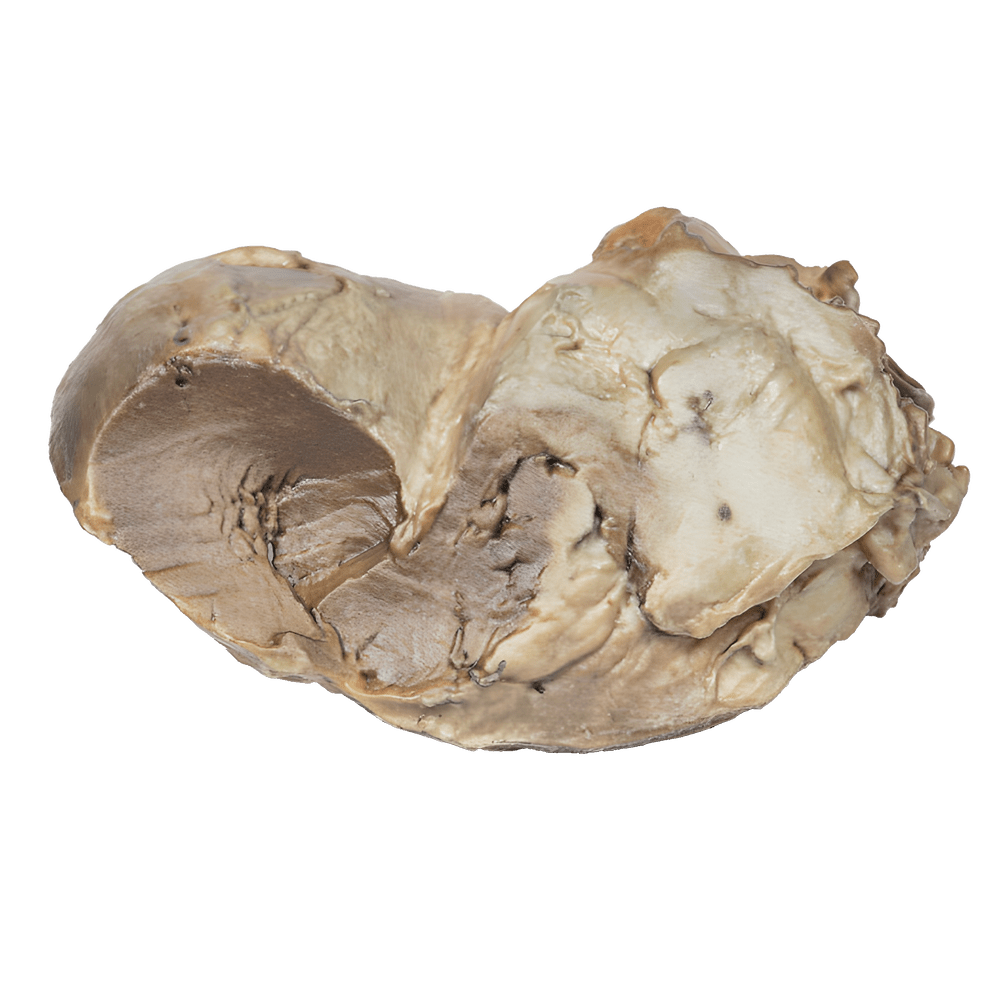Erler-Zimmer GmbH & Co. KG Bicuspid Aortic Valve 3D Model:
- Model code: MP2033
- Clinical History
- A 64-year-old woman presented with chest pain for 5 months, associated with dyspnea and wheezing for 4 months. On examination, she was dyspnea-like, with expiratory wheezing, left-sided crepitations, and evidence of a right pleural effusion. Pulse rate and blood pressure were normal. A systolic heart murmur was heard in the pericardial area and a strong pulsation was heard in the 5th left intercostal space, 10 cm from the midline. There was no peripheral edema. The patient died 4 days after admission.
- Pathology
- The heart has been opened to expose the left ventricle and associated valves. The aortic valve has 2 leaflets instead of the usual three. The valves are otherwise normal except for a rare slight thickening. The left and right coronary arteries and the left heart are widely open, as is the left circumflex coronary artery, visible in a transverse section of the atrioventricular orifice in the lower right arm of the specimen. The specimen has thick pericardial fibrosis and adhesions at the tip, suggesting restrictive pericarditis. There is no history of this cause. At autopsy, ascites, a small shrunken liver in the setting of cirrhosis, bilateral pleural effusions (R>L), and right lung collapse were found. The cause of death was cirrhosis of the liver and failure, possibly due to the restrictive pericarditis described above. The bicuspid aortic valve was an incidental finding.
- Additional Information
- Bicuspid aortic valve is a more common congenital anomaly than widely appreciated, as it may remain asymptomatic until later in life. The condition predisposes to the development of calcified aortic stenosis, usually in the 50s and 70s. It may occur alone or as part of a congenital syndrome such as tetralogy of Fallot. The latter is a combination of four congenital anomalies, including a ventricular septal defect, pulmonary valve stenosis, malpositioned aorta, and right ventricular hypertrophy.
- Bicuspid aortic valves have unequal leaflets, usually because two of the three normal leaflets are fused together. This can lead to greater valve dysfunction. Patients with bicuspid aortic valves are at high risk for aortic dilation and rupture.
- Bicuspid aortic valves tend to calcify more frequently than tricuspid aortic valves in older people, and this is due to abnormal movement and excitement caused by unequal leaflet sizes.
- As patients age, they may develop aortic stenosis or aortic regurgitation. When these become severe, symptoms of shortness of breath and decreased exercise tolerance may develop. This may be the first sign of a bicuspid aortic valve. The diagnosis of a bicuspid aortic valve is confirmed using a transthoracic echocardiogram.
Bicuspid aortic valve 3D models – Erler-Zimmer Anatomy Group
More information: on the manufacturer's website or send us an inquiry!











